In the age of digital devices and structured activities, the notion of ‘free play’ has started to fade into the background. However, you might be surprised to learn that one of the most potent tools for your child’s overall development could be as simple as “loose parts”—objects that can be moved around, redesigned, taken apart, and put back together in various ways.
In this blog post, we’ll talk about the myriad benefits of loose parts play, explaining why it’s a game-changer for children’s mental and physical growth. Whether you’re a parent, an educator, or just curious about child development, this blog will shed light on a simple yet effective approach that can unlock endless creativity and cognitive benefits.
We’ve distilled the advantages into ten key points, each backed by scientific research and real-life observations. Let’s embark on this fascinating journey together and discover why loose parts play is much more than child’s play—it’s a cornerstone for a brighter, smarter future.
1. Promotes Creativity and Imagination
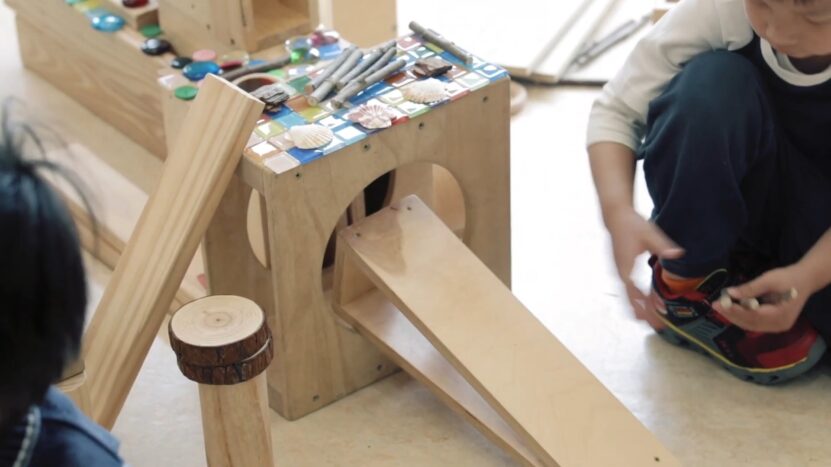
The Blank Canvas of Opportunity
At first glance, a pile of sticks, stones, or cardboard might seem like a random assortment of items. However, to a child, these loose parts become a blank canvas upon which worlds are built, stories are created, and dreams are realized. Unlike a traditional toy, loose parts don’t have a single, predetermined purpose. This ambiguity opens the door to endless possibilities, inviting children to shape their reality through the power of imagination.
Scientific Backing
Various studies in educational psychology demonstrate that free-form activities like loose parts play stimulate the creative process in young minds. By manipulating different shapes, textures, and materials, kids are essentially engaged in a real-world ‘design thinking’ process. They are learning to identify problems, brainstorm solutions, and test theories—all essential components of creativity.
Real-world Applications
In today’s fast-paced world, the ability to think outside the box is more important than ever. Encouraging loose parts play is akin to laying the foundation for future innovators and creators. Whether your child grows up to be an artist, engineer, or entrepreneur, the creative thinking skills nurtured through loose parts play will prove invaluable.
2. Enhances Problem-Solving Skills
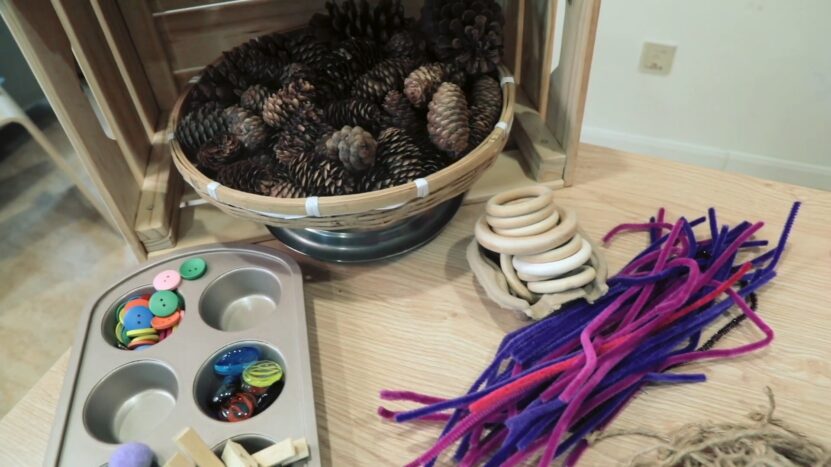
Adapt, Improvise, Overcome
Loose parts invite challenges and problems to solve. Whether it’s figuring out how to build a tower without it collapsing or deciding the best way to use a piece of fabric in a make-believe game, these playful activities promote critical thinking and problem-solving skills.
Cognitive Development
Researchers in developmental psychology stress the importance of problem-solving skills as a foundational aspect of cognitive development. Children who engage in activities that require them to adapt and find solutions are better equipped to face life’s challenges with resilience and resourcefulness.
Everyday Applications
These skills aren’t just for the playground; they have real-world applications. Learning to approach problems creatively and find solutions can be a strong predictor for academic and career success. Whether it’s tackling a complex math problem or negotiating in a board meeting, the roots of these essential skills can often be traced back to the seemingly simple activities of childhood.
3. Builds Fine and Gross Motor Skills
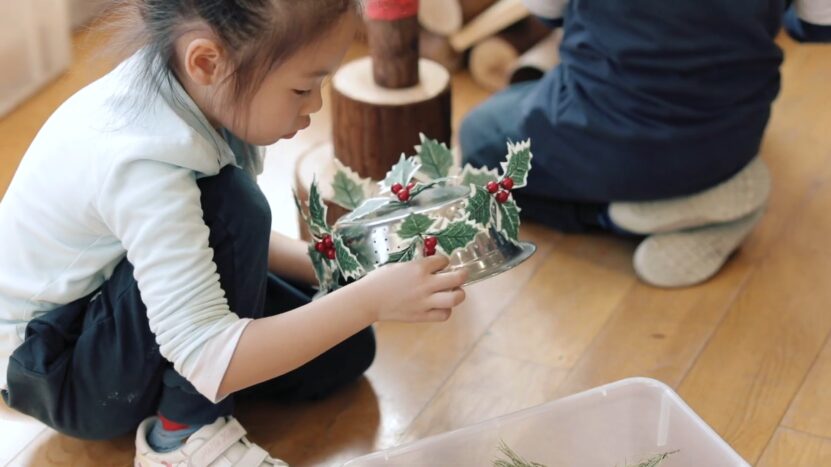
Getting Hands-On
Loose parts play often involves picking up, moving, and manipulating various objects. All this activity is more than just fun; it’s an excellent workout for your child’s fine and gross motor skills. Lifting, stacking, or threading items can improve hand-eye coordination and balance, both of which are critical for physical development.
The Role of Physical Play
Studies in early childhood education have found that physical play is not just good for the body; it also has cognitive benefits. As children engage in physical activities, they develop neural pathways that are essential for learning. Therefore, the manipulation of loose parts not only strengthens muscles but also builds brain power.
Setting the Stage for Future Success
Fine and gross motor skills play a significant role as your child grows. These skills are crucial for handwriting, sports, and other specialized activities that they will encounter in school and beyond. Loose-part play provides a platform for children to develop these essential skills in a stress-free, organic way.
4. Encourages Social and Emotional Development
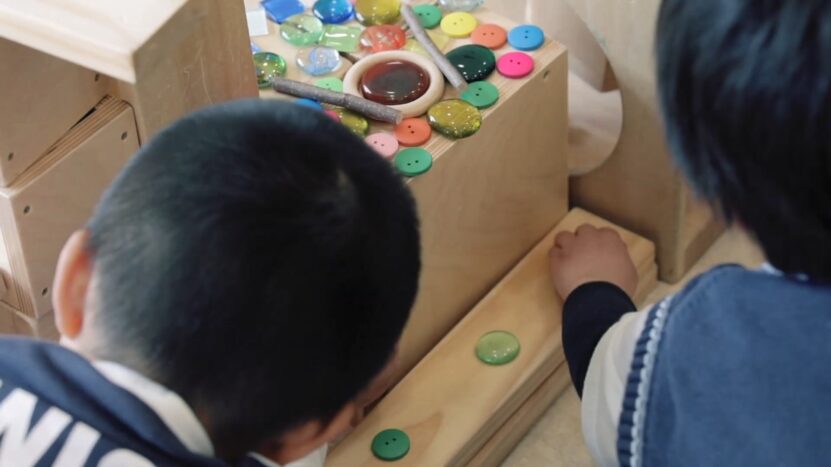
Building Relationships Through Play
When children engage in loose parts play in a communal setting, they’re also learning valuable social skills. They learn to cooperate, negotiate, and share as they work together to build something or participate in imaginative play.
Emotional Intelligence
Loose-parts play also provides children with the opportunity to explore their emotions. Through role-play and imaginative scenarios, kids can express their feelings and learn to empathize with others. This emotional exploration is vital for developing emotional intelligence, a key factor in long-term success and well-being.
Lasting Impact
The social and emotional skills gained during early play experiences can have a lasting impact. Numerous studies have shown that emotional intelligence and the ability to work well with others are often more important than IQ when it comes to achieving success in both personal and professional realms.
5. Fosters Independence and Autonomy
Ownership of Actions
In a loose-parts environment, children are the architects of their own play. This sense of autonomy is empowering and fosters an important sense of independence. When children are given the freedom to choose how they interact with loose parts, they take ownership of their actions and decisions.
Psychological Perspectives
The psychology of child development places significant emphasis on the value of autonomy. Prominent theories, like those of Erik Erikson and Jean Piaget, highlight the importance of independent exploration as a pathway for personal growth and self-confidence.
Real-world Benefits
Learning to be autonomous at a young age prepares children for the many decisions they’ll have to make as adults. Whether it’s choosing a career path or making lifestyle choices, the seeds of independence are often sown during these early, playful experiences with loose parts.
6. Enhances Language and Communication Skills
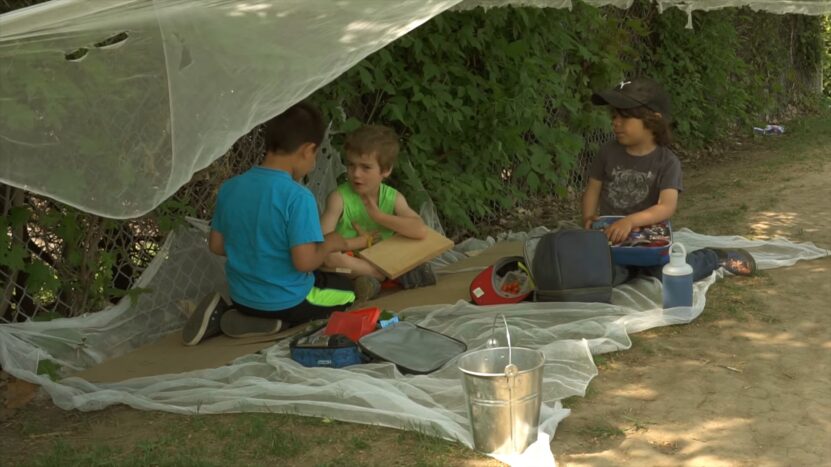
Talking Through Play
Loose parts play provides an enriching platform for language development. As children assign roles, describe their creations, and articulate their ideas, they are practicing essential language skills.
From Words to Sentences
Here’s a look at how it happens:
- Vocabulary: Naming different loose parts and their attributes (e.g., “This stick is long; this one is curved”) expands vocabulary.
- Syntax: Creating stories or giving instructions helps with sentence structure and syntax.
- Dialogue: Interacting with peers or adults during play enhances conversational skills.
Lifelong Communication
In a world where communication is key to almost every form of success, these early experiences are invaluable. Enhanced language skills are not just beneficial academically but are also crucial for effective interpersonal interactions throughout life.
7. Cultivates Focus and Attention
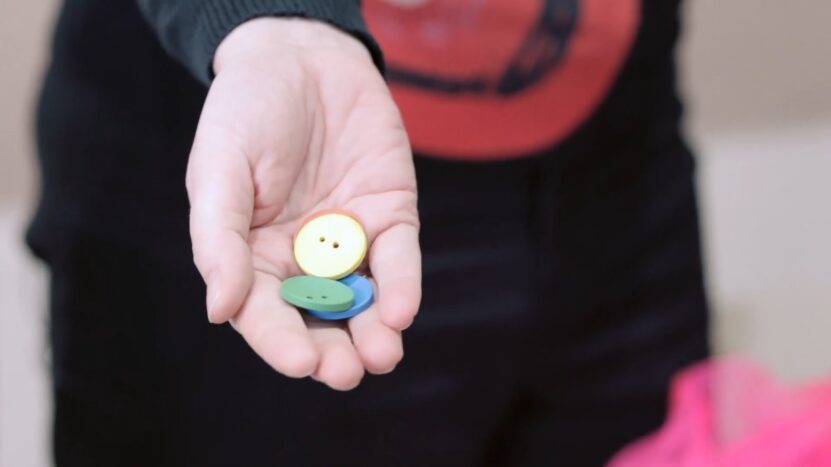
An Engaged Mind
One of the less obvious benefits of loose parts play is its ability to improve focus and attention span. Because children are deeply engaged in what they’re doing, they naturally develop the ability to concentrate for longer periods.
Scientific Insights
Research has indicated that children who participate in open-ended play activities, like those involving loose parts, show better focus and attention compared to those engaged in more structured, directed play. This improvement in attention can carry over into academic settings, aiding in study and concentration.
The Power of Mindfulness
In many ways, loose parts play promotes a form of mindfulness. Children become fully immersed in the present moment, honing their focus and attention skills naturally and effectively. This mental acuity will serve them well in all future endeavors, from academic tests to complex job tasks.
8. Increases Spatial Awareness
Understanding the World Around Them
As children manipulate loose parts, they gain a better understanding of spatial relationships. They learn about shapes, sizes, distances, and how objects relate to each other in physical space.
A Foundation for STEM Skills
This type of awareness is a foundational element in understanding more complex scientific and mathematical concepts. Geometry, engineering, and physics all require a solid grasp of spatial awareness, making loose parts play an excellent introduction to STEM (Science, Technology, Engineering, Math) skills.
Skills for the Future
In an increasingly tech-driven world, STEM skills are more important than ever. By encouraging loose parts play, you’re setting the stage for a deeper understanding of subjects that are key to many future career paths.
9. Builds Resilience and Coping Skills
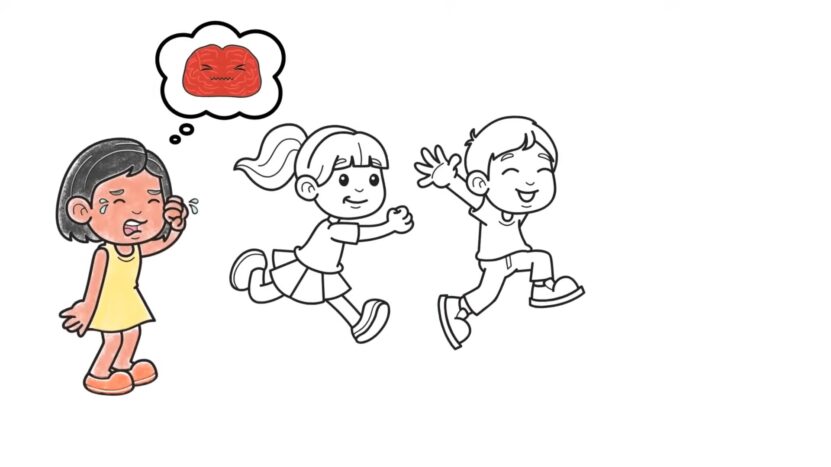
The Art of Failing Gracefully
Not every idea during loose parts play will be a success, and that’s perfectly okay. The trial and error involved teaching children how to cope with failure and setbacks, building resilience, and encouraging a growth mindset.
Psychological Resilience
In psychology, resilience is often cited as one of the most critical factors for mental health and well-being. By learning to cope with small failures during play, children build the psychological resilience they’ll need to face larger challenges as they grow.
Growth Mindset
Carol Dweck, a renowned psychologist, has emphasized the importance of a growth mindset—believing that abilities and intelligence can be developed. This mindset can be fostered through activities like loose parts play, where setbacks are not seen as limitations but as learning opportunities.
10. Enhances Connection With Nature
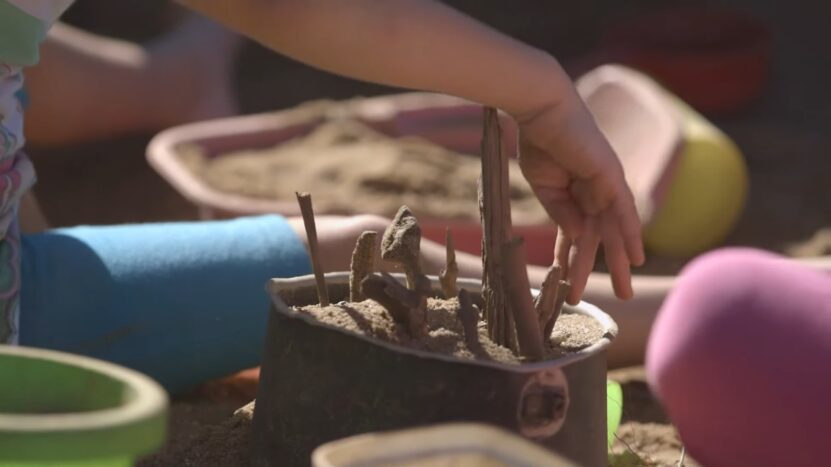
Back to Basics
Many loose parts, such as sticks, stones, and pinecones, are natural materials. Playing with these not only stimulates all the senses but also fosters a deeper connection with nature.
Environmental Stewardship
When children develop a love for the natural world, they’re more likely to become responsible stewards of the environment. This connection to nature encourages a lifelong respect for the earth and its resources.
Holistic Development
It’s not just about physical interaction; it’s about spiritual and emotional growth as well. Many cultures and philosophies emphasize the importance of a connection with nature for holistic well-being. The simplicity of natural loose parts can often provide a sense of peace and grounding, beneficial to both children and adults.
FAQs
Why is Loose Parts Play Beneficial?
Loose Parts Play fosters creativity and critical thinking in children. It provides them with infinite opportunities to think and create. The play materials are open-ended, meaning they can be used in a variety of ways over an extended period of time, making it a cost-effective option for parents and educators.
What Materials Can Be Used in Loose Parts Play?
You can use a variety of materials, such as bottle caps, straws, cardboard tubes, empty containers, fabric remnants, rocks, leaves, and many more. The key is to use materials that are safe and appropriate for the age group you are working with.
Where Can I Find Materials for Loose Parts Play?
You can find materials around your house, in your recycling bin, and even outdoors. Thrift stores, garage sales, and local businesses may also have materials that they are willing to give away or sell at a low cost.
How Do I Get Started with Loose Parts Play?
Start by taking inventory of what you already have and make a list of a few loose parts you’d like to add to your collection. Choose an area where you’d like to incorporate loose parts play and introduce some materials there.
Is Loose Parts Play Expensive?
No, getting started with Loose Parts Play does not require a large investment. Many of the materials can be found at home or are accessible for little to no cost in your community.
Can Loose Parts Play Be Used for Educational Purposes?
Yes, Loose Parts Play can target a range of developmental skills, including early literacy, math, sensory play, and art.
Is Loose Parts Play Suitable for All Ages?
While the concept is versatile, it’s important to consider the ages of the children you are working with. Some materials may be too small or otherwise dangerous for very young children.
How Can I Incorporate Loose Parts Play Outdoors?
Natural objects like rocks, leaves, sticks, and shells make excellent materials for outdoor loose-parts play. You can also use recycled materials that are safe for outdoor use.
What Should I Avoid in Loose Parts Play?
Avoid using materials with sharp edges, small parts that can be a choking hazard, or any items that are not age-appropriate for the children you are working with.
Final Words
Loose-part play is far more than a way to keep kids occupied; it’s a powerful developmental tool that offers an impressive range of benefits. From boosting creativity and problem-solving skills to enhancing social, emotional, and even academic growth, the impact of this simple yet effective form of play is far-reaching.
As parents, educators, or even policymakers, promoting loose parts play is an investment in the future—a future where our children are not just smarter but also happier, more resilient, and more in tune with the world around them.
